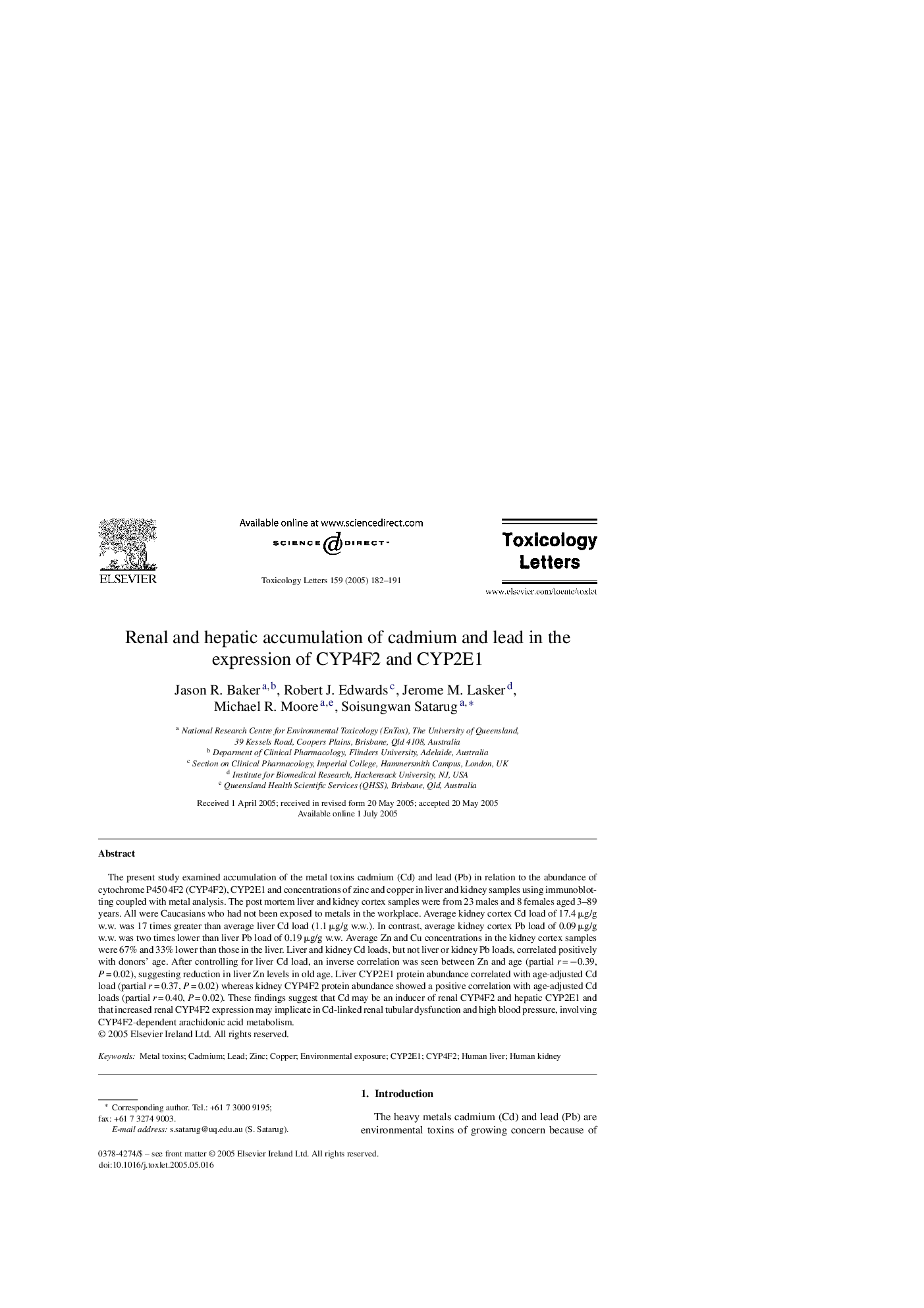| Article ID | Journal | Published Year | Pages | File Type |
|---|---|---|---|---|
| 9037363 | Toxicology Letters | 2005 | 10 Pages |
Abstract
The present study examined accumulation of the metal toxins cadmium (Cd) and lead (Pb) in relation to the abundance of cytochrome P450 4F2 (CYP4F2), CYP2E1 and concentrations of zinc and copper in liver and kidney samples using immunoblotting coupled with metal analysis. The post mortem liver and kidney cortex samples were from 23 males and 8 females aged 3-89 years. All were Caucasians who had not been exposed to metals in the workplace. Average kidney cortex Cd load of 17.4 μg/g w.w. was 17 times greater than average liver Cd load (1.1 μg/g w.w.). In contrast, average kidney cortex Pb load of 0.09 μg/g w.w. was two times lower than liver Pb load of 0.19 μg/g w.w. Average Zn and Cu concentrations in the kidney cortex samples were 67% and 33% lower than those in the liver. Liver and kidney Cd loads, but not liver or kidney Pb loads, correlated positively with donors' age. After controlling for liver Cd load, an inverse correlation was seen between Zn and age (partial r = â0.39, P = 0.02), suggesting reduction in liver Zn levels in old age. Liver CYP2E1 protein abundance correlated with age-adjusted Cd load (partial r = 0.37, P = 0.02) whereas kidney CYP4F2 protein abundance showed a positive correlation with age-adjusted Cd loads (partial r = 0.40, P = 0.02). These findings suggest that Cd may be an inducer of renal CYP4F2 and hepatic CYP2E1 and that increased renal CYP4F2 expression may implicate in Cd-linked renal tubular dysfunction and high blood pressure, involving CYP4F2-dependent arachidonic acid metabolism.
Related Topics
Life Sciences
Environmental Science
Health, Toxicology and Mutagenesis
Authors
Jason R. Baker, Robert J. Edwards, Jerome M. Lasker, Michael R. Moore, Soisungwan Satarug,
